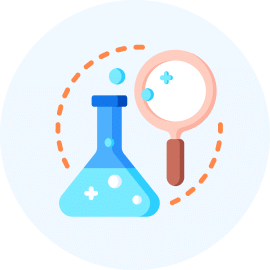GATE Chemical Engineering Exam > GATE Chemical Engineering Videos > Crash Course for GATE Chemical Engineering > First law for open systems
First law for open systems Video Lecture | Crash Course for GATE Chemical Engineering
FAQs on First law for open systems Video Lecture - Crash Course for GATE Chemical Engineering
| 1. What is the first law of thermodynamics for open systems? |  |
Ans. The first law of thermodynamics for open systems states that the change in internal energy of the system is equal to the heat added to the system minus the work done by the system, plus the energy flow into the system through mass transfer. Mathematically, it can be expressed as ΔU = Q - W + Σ(Enthalpy_in - Enthalpy_out).
| 2. How does the first law apply to chemical engineering processes? |  |
Ans. In chemical engineering, the first law is crucial for analyzing processes such as reactors, distillation columns, and heat exchangers. It helps engineers calculate energy balances, ensuring that all energy inputs and outputs are accounted for, which is vital for designing efficient processes and equipment.
| 3. What are some examples of open systems in chemical engineering? |  |
Ans. Examples of open systems include continuous reactors, distillation columns, and absorption towers. In these systems, mass and energy can enter and leave the system boundaries, making it essential to apply the first law of thermodynamics to evaluate performance and efficiency.
| 4. How can the first law of thermodynamics be applied to energy efficiency in chemical processes? |  |
Ans. By using the first law, engineers can identify energy losses in a chemical process and develop strategies to minimize them, such as improving insulation, optimizing heat exchangers, or recovering waste heat, thereby improving the overall energy efficiency of the process.
| 5. What role does the first law of thermodynamics play in the design of chemical reactors? |  |
Ans. The first law of thermodynamics is fundamental in reactor design as it helps determine the energy requirements for reactions, heat transfer needs, and the overall energy balance. Understanding these aspects ensures that reactors operate under optimal conditions, maximizing yield and minimizing energy consumption.
Related Searches















